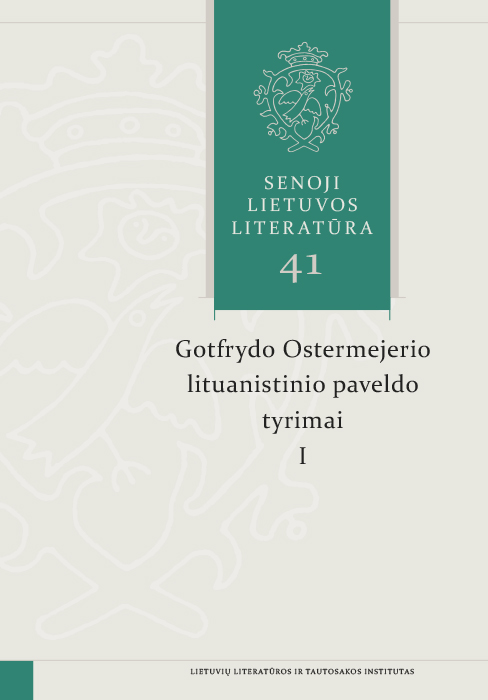Considerations on the Etymology of Mythonyms Mentioned in Kritischer Beytrag zur Altpreußischen Religionsgeschichte (1775) by Gottfried Ostermeyer
Abstract
The paper deals with the methodology of etymological analysis of the mythonyms used by Gottfried Ostermeyer (1716–1800) in his Kritischer Beytrag zur Altpreußischen Religionsgeschichte (Marienwerder, 1775).
The prospect of etymological and mythological research of the mythonyms of EPr. Mag(g)ilà, magyla, Lith. Mogyle and the possibility of the common origin of the hieronym (sacred name) krivis and sub. Lith. krivūlė are also discussed. These two mythological facts in Gottfried Ostermeyer’s book are believed to be mentioned for the first time.
To summarize the outcomes of the research into Prussian and Lithuanian theonymes mentioned in the work (i.e. Perkunas; Okoperun / Occopirn; waigdiuks / Ʒwaigʒdiks; Bangputtys; Potrimpus / Patremćius; Anttrimpus / Anttremćius / Attremćius; Bliʒgëlis; Diewaites; emberys / emienek, empati / emyne; Jawinnê; Pergubrus; Girryſtis; Puſʒkaitis; Bibcʒiû Bóbelis; Melletële; Barſtúkai; Kaukarus; Laima / Laimë; Curcho / Kurcho / Kurchos; Pilwytis; Atſweikćius / Atſweikinćius / Auſweitis; Gabjauja; Pardoytis / Pardůtis; Gué / Cʒué; Marcopol; Worſʒkátis / Werſʒukátis; Jaućiû Bobis / Baubis; Gardëtis; Kiauliû krukë; Iſʒwambratis / Wiſʒtambratis; Muſſû Birbiks; Pykullus / Pekullus / Pocollus / Potoll; Magilá; Giltine; Jagaubis; Drebkullys; Laumé; Kaukas; Markopecʒei / Marcopet) made on the basis of a parallel comparison of Ostermeyer’s methodology of etymological analysis and contemporary results of the same research field, the principal statement is to be formulated: mythological data presented in Kritischer Beytrag zur Altpreußischen Religionsgeschichte is constructive due to the verification factor.
